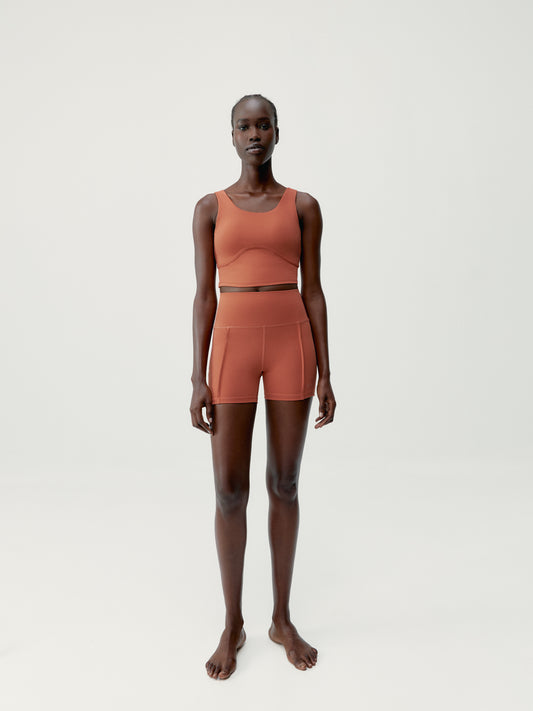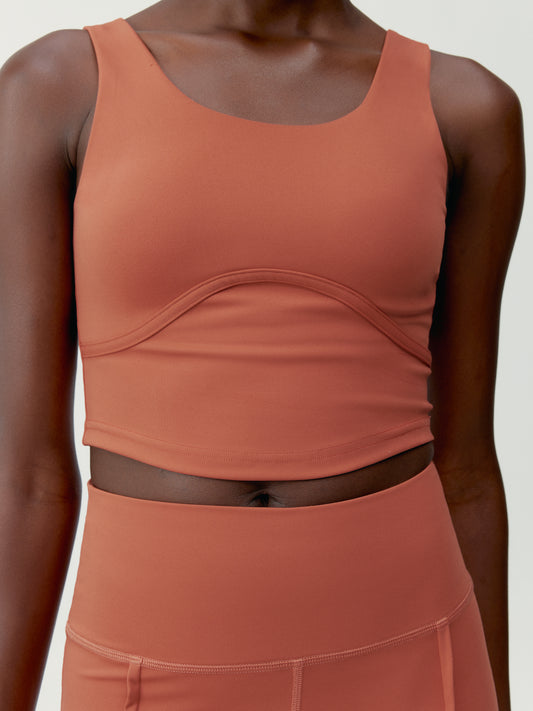Índice
How many times have you heard that taking enough protein is recommended to maintain an optimal nutritional status? But have you also heard just the opposite, that consuming too much protein is detrimental to your health, that not all protein is of the same quality and is not assimilated in the same way, that the source makes all the difference, etc.
The reality is that there is too much information (or misinformation) about protein intake in women, which leads to enormous confusion and many doubts about how to approach protein intake.
I have decided to write this article to try to clear all the doubts regarding protein intake in women. If you are interested in this topic, read on!
What is protein and what is it good for women athletes?
Protein is one of the three macronutrients (along with carbohydrates and fats) that make up the diet. They form structures in our body (organs, muscles, tendons, skin), but also make up the most important molecules in our body such as enzymes, hormones or certain types of neurotransmitters. And yes, proteins can also be used as a source of energy. To do this, we must digest them thanks to enzymes that we all have in our gastrointestinal tract and that break proteins into smaller and easily absorbable structures through our intestine.
As you can see, they play a key role in our vital function.
In turn, proteins are composed of smaller structures (or molecules) called amino acids. The human being is capable of using 20 amino acids, of which 9 are essential (whenever you see the word essential in nutrition, it refers to the fact that the body is not capable of synthesizing it by itself and must be ingested through the diet).
Now, when a protein source is said to be complete, it is because it contains all 9 essential amino acids in its composition. Animal sources of protein (milk, meat, fish, eggs...) are complete, and some vegetable sources such as chickpeas, quinoa or soybeans are also complete. But you could also consume all the essential amino acids from vegetable sources by mixing foods that complement each other nutritionally (e.g., rice and legumes). On the other hand, it is also not mandatory to take complete protein at every meal, as long as you take all the essential amino acids during the day.
Important note: if you follow a 100% plant-based diet, you should take into account other factors besides protein intake.
Benefits of taking an optimal amount of protein in women
Now that you know how many vital functions protein is involved in... Do you think it makes sense to give your body the minimum recommended amount, or should you be looking for the optimal amount?
In case you are still not quite sure, here are some of the benefits of a protein-rich diet:
1. Increase and maintain muscle mass.
Toning means strengthening muscle fibers and increasing muscle mass. And that does not mean becoming a bodybuilder from one day to the next, because that is a very different story, and should not be assimilated to the consumption of protein. And in fact, there is a certain stigma attached to protein consumption in female athletes, and it is time to banish it. But let's not fool ourselves either, without activity (exercise) and sufficient protein intake, you cannot tone your body.
Simply put, "Toning = gaining muscle + losing fat". Not more (fat), not less (muscle).
Muscle is built with protein. And a body with sufficient muscle mass is a healthy body. Muscles are necessary to maintain a level of strength and movement that allows us independence and it has been seen that muscle mass not only keeps you active, but serves as a reserve of amino acids for organs, increasing longevity(study).
2. Increase satiety
Protein has a high satiating power, and consuming a sufficient amount becomes a great ally to reduce cravings and avoid the consumption of unnecessary calories. But again we come back to the same thing, the quality and source of the protein you consume is key.
So forget about consuming ultra-processed energy bars, loaded with sugar and additives.
3. Improve your flexibility and recovery capacity
As we have seen, protein is responsible for forming the structures in your body, which is continuously repairing itself. Giving it an adequate amount will ensure that your body repairs faster, you will also recover sooner from workouts and you will have more strength to perform yoga poses that you are resisting.
4. Helps you lose weight
You know what all diets that work have in common? Optimal protein intake.
You can take more or less carbohydrates, more or less fat, but it is essential to maintain an adequate intake of protein. At the end of the day what you are looking for is to lose fat but maintain or increase muscle mass, and for this, it is essential that you give your body enough amino acids to not lose muscle.
It is also necessary that you do some strength exercise to give the "message" to your body that maintaining that muscle mass is important to you, and that it chooses fat (and not muscle protein) to produce energy.
How much protein should a woman take in daily?
The WHO recommends a protein intake of between 0.8 -1 g per kg of body weight. This is the amount necessary to avoid a deficiency of this macronutrient, but there is much scientific evidence that casts doubt on whether this recommendation is the optimal amount.
This review of studies concludes that it is more advisable to place the intake between 1.3-1.8 g per kg of body weight, and even increase it if you do intense physical activity or if you are in a process of fat loss.
This other meta-analysis (the highest level of evidence) concludes that there are clear benefits to raising protein intake above the WHO recommendations.
Drawbacks of a high-protein diet
Excess is never good and too high a protein intake is neither beneficial, nor healthy. In fact, in most of the scientific studies consulted, no benefits have been seen in taking more than 3g per kg of weight of protein.
Although excessive protein intake remains a health concern for individuals with pre-existing kidney disease, the literature lacks significant research demonstrating a relationship between protein intake and the onset or progression of kidney disease in healthy individuals (study).
What protein-rich foods are most recommended?
The more variety, the better. A diet that includes different sources of protein is the best strategy to provide our body with the food it needs to function properly and meet our personal goals.
It is very common to get protein from the same sources, which, unfortunately, tend to be unhealthy: turkey luncheon meat (ultra-processed with lots of additives), energy bars, high protein but sweetened yogurts, etc.
Choose your protein sources from real food, rotating sources. Each protein-rich food is accompanied by other nutrients (vitamins, minerals and other myocronutrients, etc.) and it is important not to overfeed protein from a single source to avoid intolerances and not to impoverish the diet.
Another key point is that we need to consume protein that does not come only from muscle, as we are used to do nowadays (e.g., chicken breast, beef fillet). Protein is made up of many amino acids, but muscle is especially rich in methionine. This amino acid by itself is not a problem, but if we do not have a balance with the consumption of glycine (another amino acid) it can generate problems, including increased cardiovascular risk (study). And consuming enough glycine helps to solve the problem (study).
And where can we get glycine from? Mainly from certain organs and bones. Never in our history have we had the ability to eat only one part of the animal and our body is not used to it. If you do not care much or you find it difficult, you can choose to eat bone broth, gelatin (real gelatin, do not opt for supermarket preparations) or take a collagen supplement that is also rich in glycine.
If you follow a vegan or low animal protein diet make sure you take all the essential amino acids and it would be a good idea to supplement with a well formulated protein shake, but keep in mind what I said before: to take an exclusively plant-based diet, you will probably need the advice of a professional.
Protein shakes for women Are they really useful?
Reaching an optimal level of protein is sometimes complicated with today's pace of life. And having little time to eat and little time to cook doesn't help.
In order to reach the amount of protein intake that we propose and in an adequate way, we can also consume protein shakes. In fact, they can be very helpful in meeting our nutritional goals without wasting a lot of time.
The problem is that shakes have traditionally been associated with gyms and bodybuilding. Because they were generally the people most interested in gaining muscle mass. But that is changing and now drinking protein-rich drinks is no longer intended only for this group (thank goodness!). But be careful, not all shakes are the same, and you should look closely at the label because many are loaded with too many sweeteners and other additives, or are formulated with synthetic compounds and not of natural origin, or from very unsustainable sources.
I particularly like to consume vegetable and organic protein shakes from the brand Baïa®, as we have formulated it just for people looking to supplement a varied diet with high biological value vegetable protein, easy to digest, organic and without additives or added sugars. And the reality is that I already consume enough animal protein on a daily basis, and not enough vegetable protein (especially legumes). I am not vegetarian or vegan, but I do consider myself a flexitarian and I give special importance to the origin of the food I eat. Vegetable protein also gives the intestine a break and plant foods also have other very beneficial compounds (antioxidants, anti-inflammatory, etc.).
One or two shots to help you take in about 40g would be my recommendation. You should see them as an aid and not as the main source of protein in your diet.
I hope this article has helped you to solve your doubts and has dismantled many myths.
But I don't want to say goodbye without one last tip. Many times we overestimate the amount of protein we are taking in. 100g of chicken breast is not 100g of protein. It's about 21g, since chicken has other nutrients, water, etc. To see the amount of protein you take in a day I advise you to put for a week the foods you take daily in an app like myfitnesspal or myfatsecret. You put the food, the amount you have taken and you will discover the amount in g of protein you are taking in your day.
It's not about counting calories and amounts all the time and obsessing about it, but doing this exercise a couple of times will help you to know better the amount of macronutrients in your favorite dishes and thus better plan your meals.




